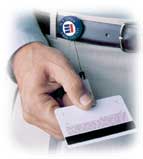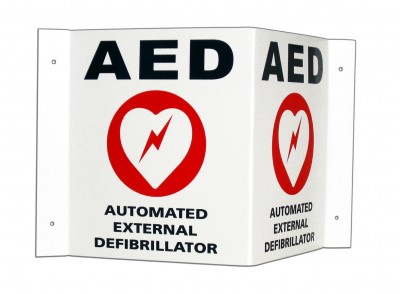I’ve never been to nursing school. But I like to imagine it goes something like this:
On the first day, you walk into class, surrounded by other bright-eyed, eager young students ready to learn the art and science of nursing. Textbooks weigh down your bag, and your pencils are sharp and ready.
Before you stands your instructor, an impressive-looking MSN whose carriage suggests many, many nights spent awake amidst the cool blue lights and quiet beeps of a MICU. As you watch, she strides to the whiteboard and writes in block letters:
Lesson One: The ID Flip
Lesson two is eye-rolling.
Most hospitals, just like most ambulance services, require that clinical staff wear an ID badge at all time. This identifies them by name and role (nurse, doctor, PA, etc.), and often gives them access to secure areas as well.
Long ago, some canny soul discovered that when patients know your name, they can complain about you. If they decide that they don’t like you, whether justified or not, they can call people — like your boss — and unleash angry, entitled, and very personalized tirades about “Sarah Roberts, that mean witch who told me to shut up and stop smoking heroin.”
“Well,” we figure; “if they don’t know our name, they can’t complain.” So although the powers-that-be did insist that badges be worn, we started hanging them in odd places, like from our belt, or inside a pocket. Or covering them with stickers and other things. But the best of all answer of all was elegantly geometric, made especially easy by free-spinning retractable ID clips: simply twist the card so it faces your chest, and the only thing visible is whatever text happens to be printed on the back. Technically, you’re still wearing the thing, and if the boss notices you can just say “whoops, it got twisted,” but nobody can actually read your name, and, ninja-like, you can move through the ward unseen, a bescrubbed ghost.
The nurses have turned this into an art-form, and in some places it’s like finding a four-leafed clover to see an RN with a visible ID (usually I figure they’re new there). But we’ve become awfully fond of this in EMS as well.
People, I realize that the world’s a rough place, that patients can be impossible to please, and that even the best of us need to take steps to ensure we still have a job tomorrow. I do understand this. But there’s a certain point where you have to stop digging trenches, and realize that if you’re giving great care, following procedure, behaving professionally, and generally toeing the line, then you should be willing to stand behind your work. If you’re employed at the kind of place that’s willing to take any complaint as reason to show you the door, I assure you that no amount of ID-flipping will save you. Your days are numbered. Of course, even a good service will eventually start clearing their throat and looking at you pointedly if your personnel file begins to grow particularly fat, but at that point, maybe you really should consider managing your douche coefficient.
Besides, this should all be moot, because when you meet your patient you’re introducing yourself by name anyway. Because that’s just common courtesy when you greet people. And patients are people. Right?
Strive to do the kind of work that allows you the confidence to stand behind it. When someone points at you with forehead veins a-pulsing and demands to know your name so your supervisor can “hear about it,” tell them and tell them proudly. Sometimes, doing the right thing won’t be a defense against trouble — but you can be sure that playing “who, me?” will run out of rope even sooner than that.
Clip your ID somewhere obvious — mine goes on my shoulder — where patients and staff alike can easily see it, and know what to call you and what role you’ll be playing in this show. When I see somebody with a visible ID, I take this as a good sign about their responsibility and willingness to own their work. And those are qualities we need in EMS.



Recent Comments